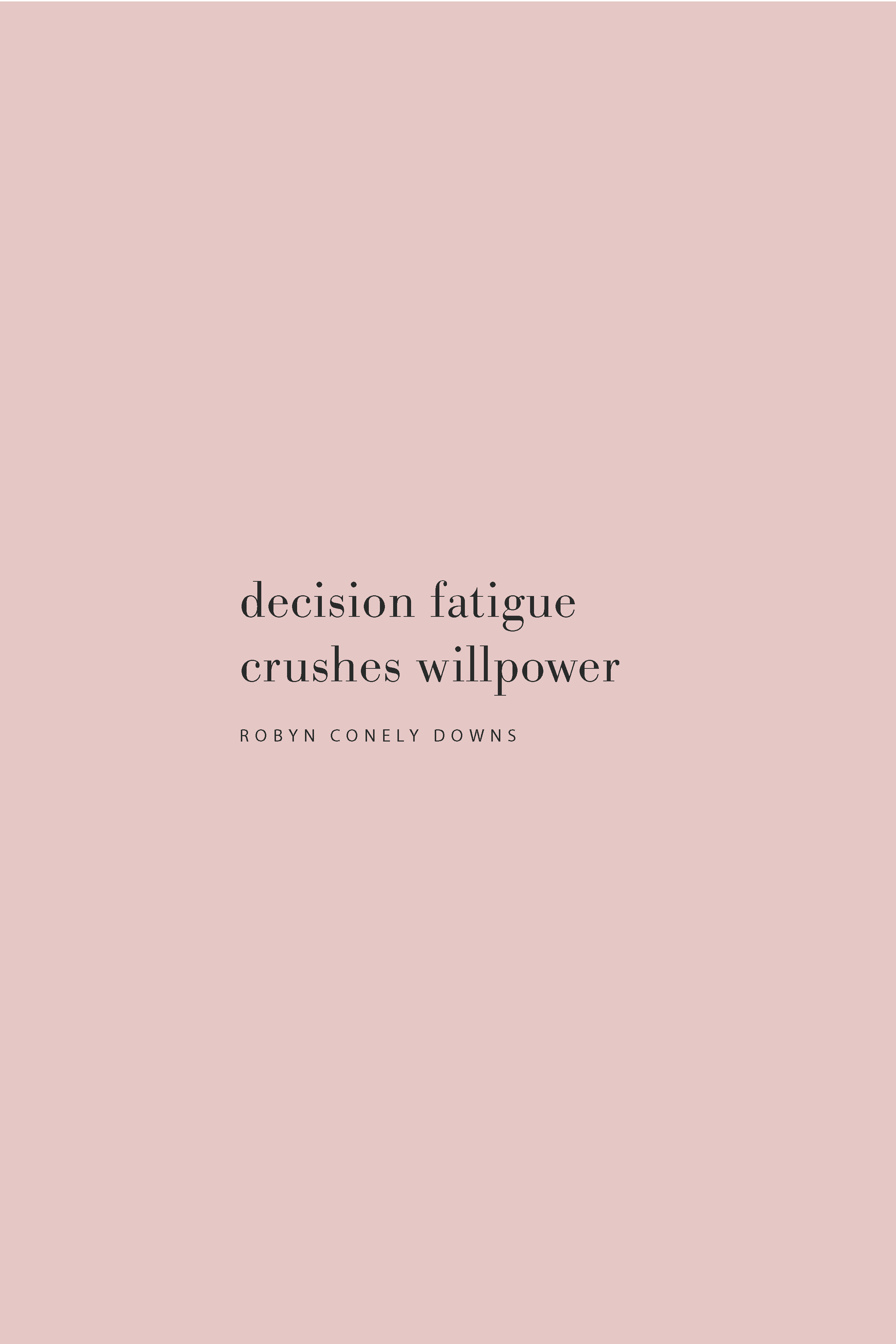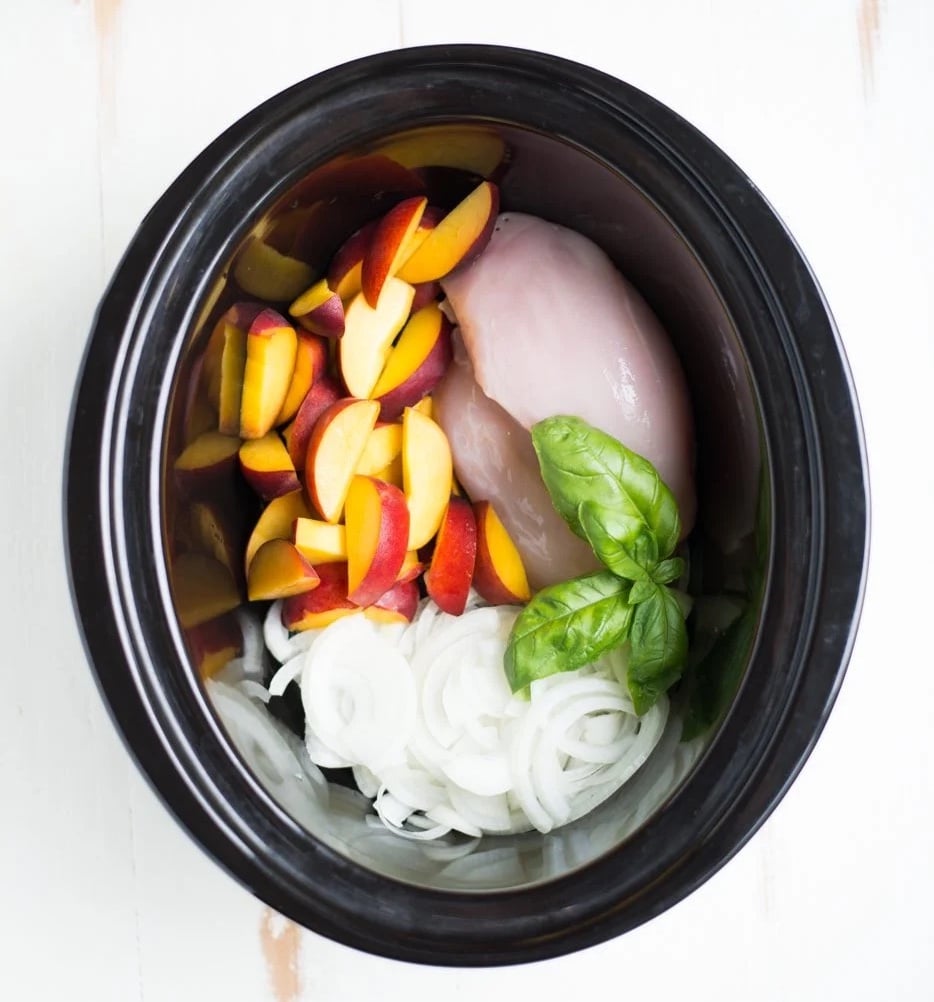How to End Food Decision Fatigue
How many decisions about food do you think you make in a day?
If you want to end food decision fatigue, I’ve got your solution.

How End Food Decision Fatigue
In this episode, we’re going to go into what decision fatigue is, why it actually matters when it comes to food, and an actionable solution to reduce the mental exhaustion that comes with the huge amount of the decisions we make every day.
How many decisions about food do you think you make in a day?
If you want to end food decision fatigue, I’ve got your solution.
Basically this is a free mini-workshop where we’ll go into what decision fatigue is, why it matters when it comes to food, and I’ll give you a specific, actionable, tactical solution that you can start doing right away.
The Real Food Simplified program is about taking decision fatigue out of the equation and making real food beautiful, easy, and streamlined.
The number of food decisions that you actually make in a day will probably surprise you.
Research has shown that people make about 227 food decisions per day.
And those are just decisions about food!
They are decisions simply about what to eat, what to make, how to make it, or how to get it.
Think about breakfast alone: we decide if we’re going to eat it, what time to eat it, what to make, do you have the right ingredients on hand… and it quickly starts to add up to something called decision fatigue.
Decision fatigue is exactly what it sounds like: it is the fatigue and mental exhaustion that comes from making hundreds of decisions every day.
It’s one of the reasons that by four o’clock in the afternoon, you start to think about heading for the vending machine or that quick hit of caffeine or sugar.
Not only does decision fatigue cause you to make worse decisions related to food, but overall, we make poorer decisions the more decisions we have to make.
What’s more, decision fatigue crushes willpower.
“The truth is, it’s not about willpower, it’s about reducing decisions”.

What’s exciting about this is that reducing decisions is actionable, meaning that you can do something about it.
You don’t have to just have more willpower or change who you inherently are, you can just learn the skills.
Step one in change is cultivating awareness of all of the decisions that you make in a day.
My guess is that when you thought about the number of food decisions you make in a day, it was probably lower than 227.
Know that you’re making a lot of decisions and that it adds up to mental exhaustion.
We don’t have to rely on willpower; we can use these strategies, habits, and routines to give us structure so that we don’t have to waste time and effort making decisions and bring that 227 way down.

On having fewer options for more variety:
Sometimes when I speak on decision fatigue, I get some push-back from people who do not like the idea of having fewer options.
At the end of the day, though, the way to reduce decision fatigue is to make decisions ahead of time and reduce the number of total decisions being made, which means having fewer options.
And that can feel really restrictive for people who want to have all the options all the time.
Think about it for yourself: if I say that we’re going to take away some options and narrow it down to just a few, does that feel refreshing? Or does it feel controlling?
If you’re in the second category, here is some ease:
First, you are in control of your options and you have agency.
Second, research has shown that when you have fewer options, you have more freedom.
It’s about taking away the mental clutter so you can actually spend time doing the things that you want to do.
I like to use the example of a capsule pantry or capsule wardrobe.
If you have a closet full of hundreds of random items that don’t go together, some of them you feel really beautiful in while others not so much, some are old and some are new, then, when you go into your closet, it’s not a good experience and you probably just end up grabbing the same three or four items anyway.
So here you are, feeling like you have so many options, but you’re just kind of making the same decision over and over.
If you take out the clutter, the stuff you don’t love, the stuff that doesn’t make you feel beautiful, that’s old, that doesn’t go together, what you’re left with is less, but more freedom and variety.
That’s what I’m talking about with decision fatigue, whether it’s with clothes, or in this case, food.
When you can streamline and take away what’s not working, you’ll have more ease long-term.
So let’s talk strategy.
I created a printable mix-and-match sheet just for this episode, where you can actually walk through this process and create your own mix-and-match meal and meal map.
This is part of a paid product that I offer, but I really wanted to give it to you for free so that you could experience and practice this to see how much easier it will make your life.
On the Mix-and-Match Method:
I came up with the mix-and-match method when I was transitioning from being really exhausted, overwhelmed, and not taking care of myself to prioritizing wellness.
At the time, I had a 60-hour per week corporate job, I was in a doctoral program, I had a one-year-old, and it was a lot.
The wellness advice that I heard just didn’t work for me, and I didn’t feel like I had enough hours in the day to do the things people were suggesting.
As I started to cook for myself, I realized that some of the recipes were just too much, too many decisions and too many ingredients.
So I started thinking that if you break a meal down into its component parts or building blocks, you can basically make any meal and you would need fewer decisions.
The essential six are the building blocks of any meal:
-
Sauces
-
Protein
-
Veggies (cooked & raw)
-
Fruits
-
Grains and bases
-
Toppings and extras
When I prepare a meal or meal plan, I think about the essential six and how I want to mix-and-match them together.
On Meal Mapping:
Meal mapping is a little more flexible than meal planning.
It starts with choosing a meal type.
Instead of finding a bunch of different recipes that don’t necessarily go together, I like to think about meal types.
Meal types might be:
-
A bowl
-
Tacos
-
Stir-fry
-
Pasta
-
Salad
When I meal map, I map each day by type of meal, rather than a recipe.
And I like to plan in reverse order, planning the most labor-intensive meal for earlier in the week and getting processively easier.
So instead of choosing this-recipe and that-recipe, you choose a meal type for the number of days that you’re eating that week.
Once you’ve meal mapped by meal type, you create meals using the essential six and the mix-and-match method.
This is the solution for reducing food waste because you can look at what you have on hand and tailor a meal around it.
Putting it in action:
Let’s say it’s bowl night.
1 | Choose a protein: chicken, beef, turkey, chicken sausage, chickpeas, black beans, lentils, salmon, shrimp.
Your proteins are customizable to your diet.
2 | Choose a sauce: garlic-balsamic, lemon-herb, barbeque, marinara, peanut sauce, sesame-ginger, salsa.
In the email that the printable comes in, I have links to all of these recipes on Real Food Whole Life.
The paid product actually includes original recipes for original sauces.
There are so many options out there when it comes to sauces, so I like to limit options to reduce the decision fatigue, but you can always add your preferred choices.
You can have the same protein and change the sauce and completely change the feel of the meal that you’re having.
Keeping the bigger variables constant and changing the smaller details make the magic.
3 | Choose your veggies.
I often use 2-3 in a meal mixing together both cooked and raw veggies.
4 | Choose your fruits.
5 | Choose your grains and bases: quinoa, brown rice, pasta, tortillas, cauli-rice, zucchini noodles, lettuce wraps.
6 | Choose your toppings and extras: guacamole, hummus, hard-boiled eggs, avocado, roasted and salted seeds or nuts, cilantro, green onions.
If you eat dairy, this could also include cheese and sour cream.
Let’s go back to this example of bowl night.
Maybe we’ve chosen a lemon-herb chicken protein.
I might also add spinach and roasted broccoli.
If I wanted to add grains, maybe put it over brown rice or quinoa.
Maybe a sprinkle of parsley to top it off.
As simple as it sounds, this is not how we typically meal plan or how we typically go about food.
Maybe it’s taco night.
The obvious would be salsa, beef, peppers and onions, tortilla, and avocado or guacamole.
But here’s where we can get creative and change things up.
Maybe we do a sesame-ginger turkey lettuce wrap instead.
It’s the same concept: protein in a sauce wrapped in something.
The variety is endless but the decisions are few.
That is how we reduce food decision fatigue.
You can customize the mix-and-match method to whatever you like, and when you download the printable, you’ll get an email with really specific sauce recipes.
If you want to take it next level (and literally take all of the decisions out of it), you can check out Real Food Simplified.
It’s all about beautiful, healthy food with more ease and less time.
The Real Food Simplified Program takes all of this and puts it into a more comprehensive package.
There are three audio guides that go with it, recipes for the essential six, a printable, and a photographed “make your own meal” inspiration.
It comes as a PDF download, with 50 basic, simple, and healthy, mix-and-match recipes, plus 30 mix-and-match meal examples.
At the end of the day, this is about reducing the food decision fatigue so you have more mental energy, more clarity so you can have more time to focus on what really matters.
Resources
Real Food Simplified Program
How to Create a Capsule Pantry for Simplified Cooking

